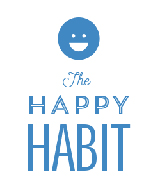Think it over
The habit of happiness
Abstract
Are human beings capable of developing or increasing happiness? Do we possess the ability to create our happiness from divinely endowed inner resources? This article examines the animal aspect of the fear-flight instinct as it evolves into humanity’s conscious potential to chart a path to happiness and greater connectivity between mind and soul. Happiness need not be elusive. Even very simple steps such as smiling, laughing and being optimistic can promote inner and outer happiness. There are many habits human beings acknowledge can be developed — eating, sleeping, exercising. Happiness is one that can be most positive and life-enhancing.
“The best way to express one’s gratitude to the Divine is to feel simply happy (1).”
Sounds simple enough. Abraham Lincoln exclaimed, “Most folks are as happy as they make their minds up to be”. But how do we learn about the habit of happiness and teach ourselves about this remarkable tool and power we possess within? Do both humans and animals express happiness? Can we actually experience and even control this cerebral, emotional, spiritual inheritance of every living being to live happily every day, in fact, every moment of our lives? Is it even possible? Are there people who actually do not want to experience happiness and would foolishly choose rather to be fearful, unhappy, depressed, victims of all sorts of circumstances? Do we need to learn the skills to being happy? It seems so; for some there may even be an attraction and ingrained habit to the ways of conflict, control, drama and division. What is unhappiness feeding within them, tricks of the ego?
Animals, like humans, can feel fear and pain. This is obvious in the wild; after all, fear is a function of survival. For eons, evolutionary human development depended on the ‘fight or flight’ syndrome, as well. This seems to be dissipating in the human realm though. The idea that animals can feel pain has also been proven through reputable clinical tests and even by such notoriously unenlightened psychologists such as B.F. Skinner. If animals clearly feel pain and fear, what about the other end of the spectrum? A debate continues over whether animals have the capacity to feel happiness. It certainly follows that they should be able to in some degree, considering that they’re capable of fear. The problem comes in the distinction between fear and happiness. Fear is an emotion that generally produces observable behaviour. Happiness, however, is more subjective, nuanced and produces less distinctly discernible behaviour. What’s more, there’s no reason for happiness to exist in the animal kingdom, since all necessary behaviour is considered to serve as some form of survival mechanism. Fear is often a response to outer circumstances for both animals and humans. The wagging tail of a dependent on survival needs.
Happiness, however, seems to be an emotion in human beings that is more elevated and consciously sought. Is it possible within our minds and souls to make a conscious decision to be happy and challenge our ‘emotional slippage’ into unconsciousness? Being happy is often a conscious decision, a collaboration between the soul and the mind — a soul-mind connection. If our goal is to practise forming the ‘happy habit’ and then to cultivate and maintain this feeling, how do we build those ‘muscles of happiness?’ How do we begin the practise to replace grumpy with happy? Let’s look at some ways to cultivate happiness.
In his bestselling book, Flow: the Psychology of Optimal Experience, after decades of research, Mihaly Csikszentmihalyi found that what ultimately produces the most joy in people is the state of Flow. Of this state he suggests that, “The best moments usually occur when a person’s body or mind is being stretched in a voluntary effort to accomplish something difficult and worthwhile (2).” As we look back on our lives, there may be moments we treasure the most that highlight accomplishments, experiences and true effort. It seems the more we challenge ourselves and do what we once thought to be impossible, the greater the levels of joy, freedom, and accomplishment we experience in our lives.
Beginning an experimental journey toward happiness might be started with small steps:
1. Laugh at yourself; smile at others. Psychologist Robert Cajon and numerous subsequent researchers have proven that act of smiling leads to the emotion of happiness (3). Smiling is not then just a side-effect of happiness, it causes it as well. It has even been shown to reduce stress and depression. So the next time you are feeling blue or want to elevate your consciousness, just smile and let your mind respond with happiness.
2. Finding the positive in any situation — it’s there.
3. Widening the soul-mind connection — when in doubt, go wide, vast, and extend.
4. Try to appreciate everything, everywhere.
5. Kindly observe yourself and determine the difference between what is desire or vital attraction and what is a true connection to divine happiness.
6. Value and practise optimism.
7. Be grateful. Right now, write 3 things you are grateful for. Respond with internal gratitude for the Divine.
8. Practise these and other ideas toward inner and outer happiness.
9. Accept and promote happiness.
There are no extenuating circumstances that suggest humanity cannot be happy when they have developed right attitudes. And once you begin a positive habit, it seems as if it picks up its own momentum. Yes, people are born in very different circumstances, but that does not negate the possibility for inner and outer happiness. Developing the ‘happiness habit’ can open new dimensions and encourage needed connections between our minds and souls.
References
1. The Mother. Collected Works of the Mother Volume 14. Cent. ed. Pondicherry, Sri Aurobindo Ashram Trust; 1980, p. 163.
2. Csikszentmihalyi M. Flow: The Psychology of Optimal Experience. Wheeling, Illinois: Nightingale Conant; 1990, pp. 18-23, 46-50.
3. Ibid., pp. 64-6.
Dian Huff Kiser, Ph.D., CFRE, is Project Director of the Health and Social Policy Institute — HASPI — in Sacramento, California.
Share with us (Comments,contributions,opinions)
When reproducing this feature, please credit NAMAH,and give the byline. Please send us cuttings.



